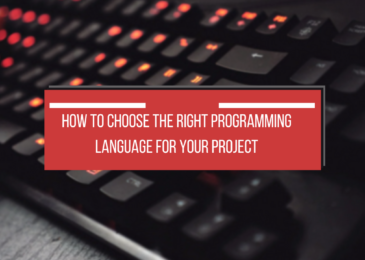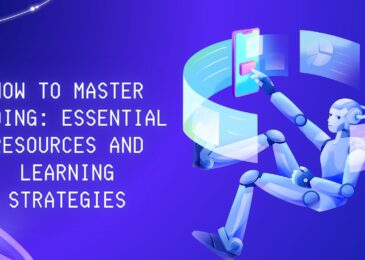Virtual Reality (VR) technology has revolutionized training and education by offering immersive, interactive experiences that simulate real-world scenarios. From corporate training to classroom instruction, VR provides a dynamic learning environment where users can practice skills, explore complex concepts, and engage in hands-on simulations. This introduction explores the myriad applications of VR in training and education, highlighting its ability to enhance learning outcomes, improve retention rates, and provide cost-effective, scalable solutions. By harnessing the power of VR, organizations and educational institutions can unlock new possibilities for experiential learning and skill development, ultimately preparing individuals for success in an increasingly digital and dynamic world.
Introduction to Virtual Reality (VR) Technology
Virtual Reality (VR) technology immerses users in simulated environments, offering a fully interactive and immersive experience. By donning a VR headset, users are transported to digital worlds where they can explore, interact, and manipulate objects as if they were physically present. VR achieves this immersion through a combination of advanced hardware, such as headsets and motion controllers, and sophisticated software that creates realistic 3D environments.
The key components of VR technology include head-mounted displays (HMDs), motion tracking sensors, and hand controllers, all of which work together to track the user’s movements and gestures in real-time, creating a seamless and immersive experience. Additionally, spatial audio enhances the sense of presence by providing directional sound cues that correspond to the user’s movements within the virtual environment.
Benefits of VR in Training and Education
- Immersive Learning Experiences: VR provides a fully immersive environment where learners can engage with content in a hands-on, experiential manner, leading to increased retention and understanding of complex concepts.
- Enhanced Engagement: The interactive nature of VR captivates learners’ attention and encourages active participation, resulting in higher levels of engagement and motivation.
- Safe Simulation of Real-World Scenarios: VR allows learners to practice skills and navigate realistic scenarios in a safe and controlled environment, reducing the risk associated with hands-on training in high-stakes industries such as healthcare, aviation, and emergency response.
- Access to Remote Learning Opportunities: VR enables learners to access educational content and training programs from anywhere in the world, overcoming geographical barriers and providing equitable access to quality education and training resources.
- Cost-Effectiveness: By simulating real-world environments and scenarios, VR reduces the need for physical resources, travel expenses, and equipment maintenance, making it a cost-effective solution for training and education initiatives.
Immersive Learning Experiences
Immersive learning experiences are a hallmark of virtual reality (VR) technology, offering learners an unprecedented level of engagement and interactivity. Through VR, learners are transported into realistic and dynamic environments where they can explore, interact with objects, and manipulate elements as if they were physically present.
The immersive nature of VR promotes active learning by encouraging learners to engage with content in a hands-on manner, leading to deeper understanding and retention of information. By simulating real-world scenarios, VR enables learners to practice skills and make decisions in a safe and controlled environment, preparing them for success in high-stakes situations.
Enhanced Skill Acquisition
Enhanced skill acquisition is a significant benefit of virtual reality (VR) technology in education and training. VR provides learners with immersive, hands-on experiences that facilitate the development and refinement of various skills in a realistic and interactive environment.
By simulating real-world scenarios, VR allows learners to practice and apply skills. In contexts that closely resemble their intended use cases. Whether it’s mastering surgical techniques, honing public speaking skills, or refining customer service interactions. VR provides a safe and controlled space for learners to experiment, make mistakes, and learn from their experiences. The feedback mechanisms integrated into VR applications. Further enhance skill acquisition by providing immediate and constructive feedback on learners’ performance, allowing for continuous improvement.
Simulations and Scenario-Based Training
Simulations and scenario-based training are powerful applications of virtual reality (VR) technology. Offering learners immersive and realistic experiences to enhance their skills and knowledge. VR allows for the creation of highly detailed and interactive simulations that replicate real-world environments and scenarios.
In fields such as healthcare, aviation, military training, and emergency response. VR simulations provide learners with opportunities to practice procedures, protocols, and decision-making in a safe and controlled environment. For example, medical students can perform surgeries, pilots can navigate flight scenarios. First responders can conduct emergency drills—all within a virtual setting.
Accessibility and Cost-Effectiveness
Accessibility and cost-effectiveness are key advantages of using virtual reality (VR) technology for training and education purposes. VR offers accessibility by providing learners with the flexibility to access educational content from anywhere in the world. Overcoming geographical barriers and allowing for remote learning opportunities.
VR can significantly reduce training costs by simulating real-world scenarios and environments without the need for physical resources, travel expenses, or equipment maintenance. By conducting training and education in virtual environments. Organizations and institutions can save on expenses related to facilities, materials, and instructor fees.
Applications Across Various Industries
Virtual reality (VR) technology finds applications across a wide range of industries, revolutionizing training, education, and operations. In healthcare, VR enables medical professionals to practice surgical procedures, patient diagnosis, and medical interventions in realistic simulations.
In aviation and aerospace, pilots and astronauts utilize VR for flight training, cockpit familiarization, and emergency response drills. The automotive industry employs VR for design visualization, engineering simulations, and safety training. In manufacturing, VR facilitates assembly line simulations, equipment maintenance training, and safety protocol reinforcement. Military and defense organizations utilize VR for combat training, tactical simulations, and mission planning. In education, VR enhances learning experiences through immersive field trips, interactive simulations, and virtual laboratories.
Challenges and Considerations
While virtual reality (VR) technology offers numerous benefits, it also presents several challenges and considerations that must be addressed for successful implementation. Firstly, VR hardware and software can be costly. It is requiring significant investment for both development and deployment. Additionally, VR experiences may induce motion sickness or discomfort in some users. Necessitating careful design considerations to minimize adverse effects.
Content creation for VR requires specialized skills and resources, posing challenges for organizations or individuals without access to expertise in 3D modeling, programming, and VR development. Moreover, ensuring compatibility and interoperability across different VR platforms and devices can be complex, limiting accessibility and scalability. Lastly, ethical considerations surrounding data privacy, user safety. And also, content appropriateness must be carefully addressed to ensure responsible use of VR technology.
Case Studies and Success Stories
Case studies and success stories illustrate the tangible benefits and real-world applications of virtual reality (VR) technology in training and education. For instance, Walmart implemented VR training modules for its employees, resulting in improved retention rates and increased efficiency in customer service and management tasks.
In healthcare, Stanford Medicine utilized VR simulations to train medical students and professionals in surgical procedures, leading to enhanced skills acquisition and confidence in performing complex surgeries. Moreover, Airbus incorporated VR into its aircraft maintenance training programs, reducing training time and costs while improving safety and efficiency.
Conclusion
In conclusion, virtual reality (VR) technology offers transformative opportunities for training and education. By providing immersive, hands-on experiences, VR enhances learning outcomes, fosters skill acquisition, and improves engagement and retention. Despite challenges such as cost and content creation, the benefits of VR, including accessibility, scalability, and real-world applicability, outweigh the drawbacks. Case studies across industries underscore VR’s effectiveness in improving performance and driving innovation. As VR continues to evolve and become more accessible, its potential to revolutionize training and education remains undeniable, offering learners and educators alike unparalleled opportunities for experiential learning and skill development.
Also Read:







